Time-lapse photography: How to make your first time-lapse video
Time-lapse videos are simple to shoot and the results are impressive, but how do you get started?
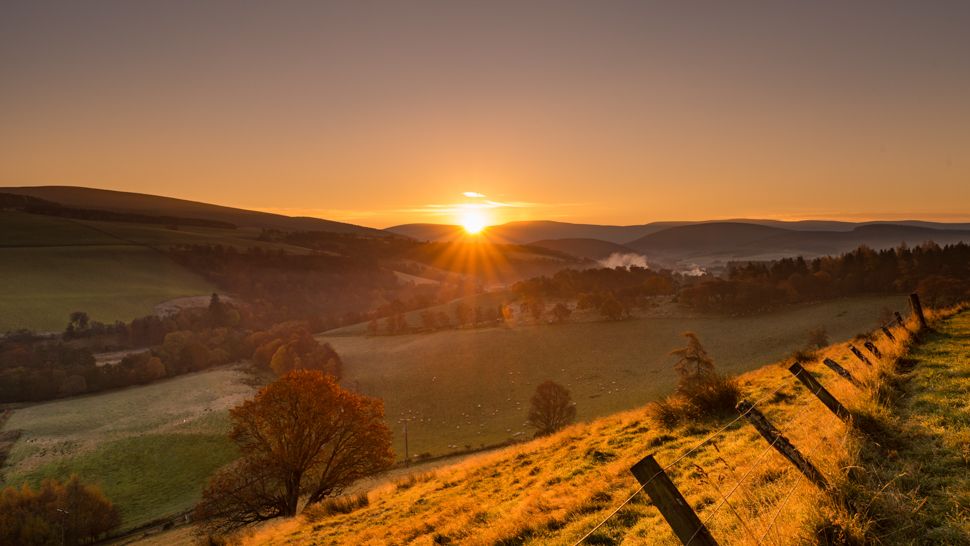
Time-lapse photography is the art of taking single images and combining them to create a video that shows the movement of the environment around you.
This could be the movement of clouds, stars or even the hustle and bustle of a busy city. The results can show how a scene can change dramatically over time, perhaps between different types of weather or from one season to the next. I find that time-lapse photography can tell a different story about the landscapes around us that a single image may not be able to tell.
• See also: Best timelapse cameras
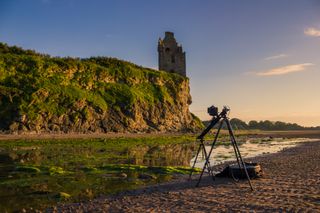
Making videos from stills
To understand how time-lapse photography works we need to understand how videos are made.
In the world of cinema and television, when we see motion, what we're actually seeing is single images shown one after another at a certain frame rate. Generally, this frame rate is anywhere between 24-30 frames per second, so if we watch 10 seconds of footage, what we're actually seeing is 240-300 single images being shown very quickly to create motion.
Now, if we apply the same way of thinking to photography, all we have to do is take a certain number of images, one after the other, over a period of time. When played at, say, 25 frames per second, we will have just created a time-lapse video.
When planning your shoot you need to consider the movement of the subject before anything else.
Are you going to see much of a difference over time or will everything stay the same? Planning your shot and picking a subject in a scene that changes over time will make for a more interesting result. This could be anything like the sun setting, traffic moving in a city or a change in weather.
Remember that photographic rules still apply to time-lapse photography, so make sure you don’t overlook composition. Consider framing your shot using the rule of thirds and try to look for interesting leading lines – and always make sure there are no distracting elements in your shot.
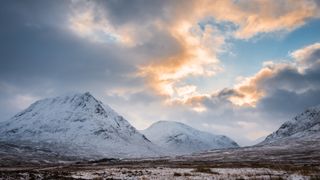
You need to plan your shoot just like you would for any stills photography shoot. Once you’ve settled on your location, check the weather and make a note of when the sun sets and rises. I use an iPhone app called Photo Pills, which shows me the path of the sun and also where the Milky Way will be during the night. I will always know in my head the shot that I’m after before I reach the location, and this enables me to concentrate on the shot instead of running around not knowing what to shoot. When shooting a time-lapse video, the shots can take a long time to make due to the number of images needed, so planning is crucial if you’re to get your shots you need in the limited time you may have.
Equipment
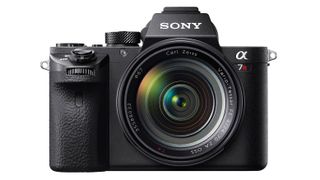
DSLR or CSC camera
Any camera will do as long as it can shoot in Manual mode.
Lens
Any lens will be fine, but it really depends on what you’re shooting. I tend to work with lenses from 14mm to 200mm.
Tripod
What you want is a strong tripod that isn’t going to blow away.
Intervalometer
You need an intervalometer so that your camera can take shots continuously without you touching it. Many cameras now have these built into them.
Setting up the shot
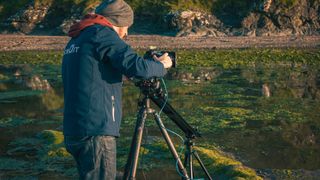
When setting up your shot there are a number of things to remember so that you don’t have a ruined shoot.
First, you need to consider how long you want the camera to be running for. Depending on the frame rate of your final video, always remember that 24-25 shots equates to a single second of video. So, if you want a 20-second video, you'll need to take around 500 images.
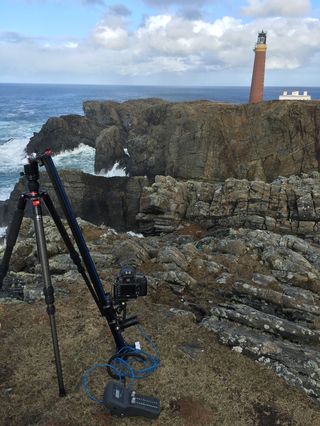
You also need to think about the interval between each frame, which is the gap between every shot taken. I judge the interval time based on how quickly subjects are moving in the scene. If I’m photographing fast-moving clouds, for example, I will usually have an interval of around 2-3 seconds. If I'm photographing the night sky, however, it could be around 30 seconds.
It's really up to you, but through experimentation you should be able to understand what works best for a particular scene or subject. I generally have an interval of anywhere between 2-30 seconds depending on what I’m shooting.
Click below to see how to shoot and edit your time-lapse images.
How to shoot a time-lapse video: Step-by-step guide
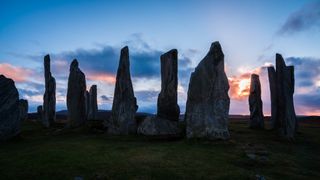
Here's a step-by-step guide of how to shoot time-lapse images.
Step 1
Put your camera on a secure tripod and lock everything down. The camera shouldn’t move at all while it’s taking images unless you're using a motorized slider.
Step 2
Attach an intervalometer to your camera (some cameras have an intervalometer built into them) and dial in your interval settings. The interval can be whatever you want and should on the scene and what lens you’re using. I tend to set it between 1 and 5 seconds.
Step 3
Put your camera in Manual mode as you don’t want it to judge the exposure for you. If you shot in Aperture Priority mode there’s a high risk there will be flickering in your video.
Step 4
Check your exposure and make sure there are no blown highlights. Also make sure to manually focus the lens to make sure the final image will be sharp.
Step 5
If you’re using a DSLR, make sure to cover the viewfinder as stray light leaking through could change the exposure between frames (and would result in flickering).
Step 6
Take a test shot to see if you’re 100% happy with exposure, composition and focus.
Step 7
Think about how many shots you want to take. In the UK the standard frame rate is 25fps, so to get 10 seconds of footage you will need to take 250 images. I tend to take around 400-600 as this gives me more room for editing.
Step 8
Once you're happy, click 'Start' on the intervalometer (or the equivalent option on your camera) and leave it well alone for the duration of the shots.
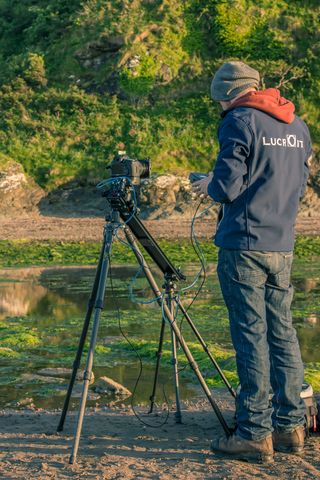
Top tips

- Shoot in Raw as this will give you an image with a larger dynamic range and more possibilities when editing.
- When setting your camera to the Manual exposure mode, don’t forget to manually set your white balance as well.
- Your batteries will drain quickly so always carry spares. I would recommend using a battery grip on your camera; this will enable you to use two batteries at the same time.
- You want the footage to look smooth and a bit of motion blur works well in time-lapse, so try to use a shutter speed of around 1/50sec, as this is the standard for a cinematic look.
- Clean your camera’s sensor before the shoot and clean the lens element right before your first frame, just in case there are any rain droplets on the front element.
- Your memory cards need to be large and fast. You’re going to be taking a lot of images and your camera’s buffer needs to quickly process them before the next shot. I recommend anything above 32GB with a write speed of 50MB/s or more.
- Make sure to turn off the Auto Power Off and Review Image options (or however they are titled) in your camera as this will help save battery life.
Editing your shots

It's possible your camera will stitch your results together for you. For the benefit of those whose cameras do not, here's how to do it on a computer using Lightroom.
Step 1
Import the images into Adobe Lightroom and make sure to separate the time-lapse images from anything else you have taken that day.
Step 2
Edit one of the images. I generally pick an image in the middle of the sequence and, once I've finished editing, I copy all the settings onto all the other images. Make sure to crop the image at the ratio of 16x9 as this is the standard aspect ratio for most videos.
Step 3
Export the images as JPEGs, at a resolution of Full HD (this would be a resolution of 1920x1080 pixels).
Step 4
Open Photoshop, Click Window and change the Workspace to Motion.
Step 5
Now click File > Open. Find the folder in which you’ve put the exported images and select the first image. Before you click Open, click Options and make sure Image Sequence has been checked.
Step 6
Set your desired frame rate. I usually set it to 25fps as I’m in the UK.
Step 7
Your video will appear in the timeline at the bottom of the screen. From here you can play a preview to see how it looks. Be aware it might not play smoothly the first time as it’s still rendering the files.
Step 8
Once happy you can now export it as a video. Click File > Export > Render Video.
Step 9
Here, you can name your video file and set the video format (H.264 is best for general use). The frame rate and resolution will be based on how you imported it, so this will not need to be changed. Now you can click Export.
Alternative technique
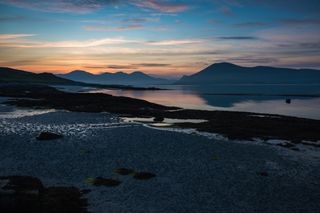
If you have Adobe After Effects, or you just don't wish to use Lightroom for whatever reason, this is another great way to edit a time-lapse images.
Step 1
Open After Effects, select File > Import Files > Multiple Files and select the first unedited Raw image, making sure Image Sequence is selected.
Step 2
Once clicking Open a dialog box will appear and here you can edit the file. This is Adobe’s Camera Raw interface, so you can edit the image just like you would in Lightroom and it will automatically apply the edit to the other shots.
Step 3
After this, drag the file as a new composition and then you can render the resulting file into a video, just like we did in Photoshop.
Conclusion
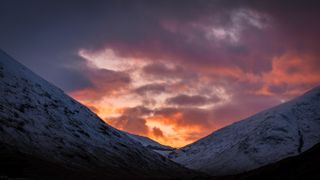
Time-lapse photography can be very addictive, and being able to create motion with your still images just adds another dimension to your photographic skills.
At first, it will take a while to remember everything you need to make the shots work, but with time and practice you’ll be able to think quickly about setting up your shots. By following the advice I’ve given your chances of achieving the desired shot should be even higher.
Read more: How to create a cinemagraph
Get the Digital Camera World Newsletter
The best camera deals, reviews, product advice, and unmissable photography news, direct to your inbox!
